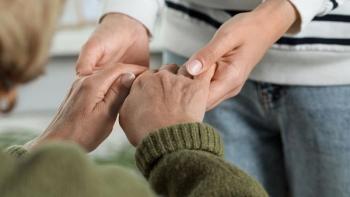
Lymphedema Care During Winter Months
Limbs affected by lymphedema require specialized care, but during months where temperatures can be extreme, a little extra effort is necessary.
Anyone treated with surgery for breast cancer is at risk of developing lymphedema. This uncomfortable side effect usually begins with a slight, uncomfortable swelling in or around the armpit area. The condition of lymphedema can develop immediately after surgery to remove breast cancer or it can appear many months later. It may even appear years after the initial breast cancer surgery.
Often, the swelling moves from the armpit area into the rest of the arm causing discomfort. It may feel like a tightness or heaviness and can seem to grow worse throughout the day. Normal daily activities can exacerbate the swelling, that’s why it’s important for anyone with post-surgical swelling to pay close attention to symptoms and report them to a doctor.
Lymphedema does not magically go away and there is no treatment to remove it. There are ways to lessen the symptoms, however, and those include compression sleeves, manual lymphatic drainage, elevation, physical therapy and pneumatic compression pumps. These treatments are usually prescribed by an attentive physician and will be determined according to the severity of each case.
Summer months are difficult for those suffering with lymphedema. Caring for lymphatic limbs during this time of year usually revolve around finding ways to reduce swelling brought on by soaring heat and exposure to the sun. Winter months bring a different set of challenges.
I’ve found my lymphedema seems worse in the winter months but for those, like me, who struggle with the effects of lymphedema year-round, it can be a daunting task to keep under control but over the past few years, I’ve learned some good information I’d like to share with you.
Helpful tips for winter limb care:
- During winter months, pay close attention to the condition of the skin. Indoor heat can be very problematic. Skin may become dry and itchy from a lack of moisture in the air or in more severe instances, it may become cracked and bleeding.
- Dry brushing is a good technique to help reduce swelling in the lymphatic system. To do this, a soft bristled, body brush is applied in gentle circular or sweeping motions from the ankles up to the legs and torso, then from the tips of the fingers up the arms and in toward the heart. (This allows the body to distribute the flow of lymphatic fluid and makes it easier to remove through elimination via the urinary tract system.)
- When bathing or showering, use a moisturizing soap. It’s important to dry well before donning compression sleeves. Avoid vigorous scrubbing; instead, dry gently.
- If necessary, an application of deep, penetrating lotion can help fight skin dryness and providing relief before things get out of control. When applying the lotion, start at the fingertips and work up the arms toward the shoulders.
- It’s very important to look at your limbs. They should be checked daily. Any open wound or oozing on the limb should be immediately checked by a doctor. Infections can occur rapidly with lymphedema and can quickly turn into a condition called cellulitis.
- When going out in cold weather, it is very important to wear warm garments. By layering clothing, the affected limb can be protected, but should never be restrained. Clothing should always allow good movement. Any tight or restrictive clothing could exacerbate the lymphedema.
- Be particularly careful around hot surfaces and always protect your affect limb. This includes extremely hot water like hot tubs or baths. Take care also around hot cooking surfaces. Always use protective, heat-resistant cooking mitts or silicone cooking gloves.
- Take care when going outside in icy conditions. A fall or injury to an affected limb could be extremely dangerous.
Lymphedema, although frustrating and uncomfortable, can be managed. With a little extra effort, protecting your arms will become second nature.




